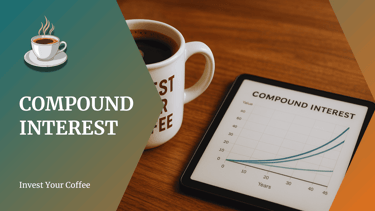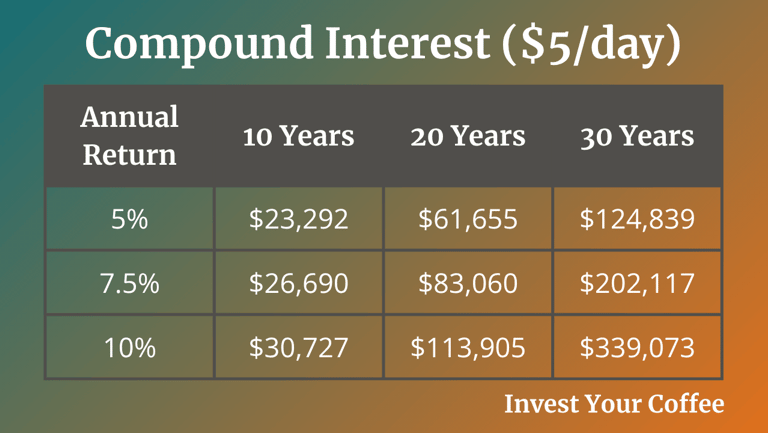Compound Interest: Let Your Money Work for You
Discover how compound interest turns small, steady contributions into long-term growth. Time and patience create results.
Invest Your Coffee


Compound interest occurs when your earnings start earning their own earnings. Unlike simple interest, which is calculated only on the original principal, compound interest is calculated on both the principal and the accumulated interest. This “interest on interest” accelerates growth: the more frequently interest is added, the faster your balance grows.
Leading investment firms describe compound interest as interest earned on top of interest. Three factors drive the effect: the sooner you invest, the more time your money has to compound; reinvesting your earnings amplifies growth; and staying invested helps avoid large losses that can erode compounding.
Simple vs Compound Interest
With simple interest, you earn a fixed percentage on your original investment.
For example
Investing $10,000 at 5% simple interest for three years yields $1,500. Under compound interest, the interest you earn in each period is added to the principal, so future interest is calculated on a larger base.
Using the same $10,000 at 5% compounded annually for three years results in $1,576.25 in interest which is slightly more, because each year’s interest is reinvested.
This scales with a larger investment base.
The Power of Time and Reinvestment
Compounding rewards patience. The longer you keep your money invested and reinvest your returns, the greater the effect. The formula for future value of a series of equal monthly investments is:
FV = P × [ (1 + r / n)^{n × t} − 1 ] / (r / n)
where P is the monthly contribution, r the annual interest rate, n the number of compounding periods per year, and t the number of years.
Ok, so you're not going to write that all out and do the math. I put that all into a calculator for you to see how your money could compound over time and what it looks like if you dollar-cost average into your investements.
Historically, the U.S. stock market has delivered an average annual return of roughly 10%, although returns vary widely from year to year. When planning, many financial educators suggest using a more conservative estimate (6%–8%) to account for inflation and volatility.
How a Small Monthly Contribution Grows
The table below shows how a $5 daily investment could grow at three different annual rates over time. Values assume monthly compounding and reinvesting all earnings.


This illustrates the exponential nature of compounding: the longer your investment horizon, the larger the gap becomes between different rates of return.
Investopedia offers a similar example: starting at age 20 and saving $100 a month at 4% compounded monthly would grow to about $151,550 by age 65. Beginning later requires much larger contributions to achieve the same goal.
Conclusion
Compound interest may be called the “eighth wonder,” but there’s nothing mystical about it. By reinvesting returns and giving your money time to grow, you unlock exponential growth potential.
Start early, stay consistent, and let compounding work in your favor.
© 2025 Invest Your Coffee. All rights reserved. Created by Nectagrity
A simple daily investing experiment showing the power of consistency and compound interest.


